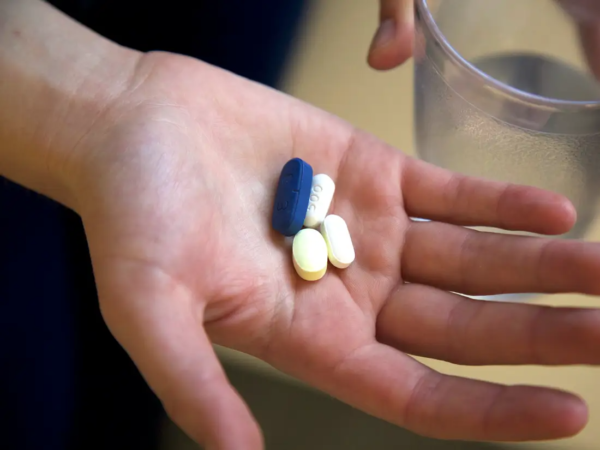Gastroduodenal ulcer, also called gastric ulcer, if located in the stomach and duodenal ulcer when formed in the duodenum (first part of the small intestine), somehow creates erosion, which penetrates deeply into the wall of the digestive tract. These wounds are often painful; they come in direct contact with the acid present in the digestive tract. The situation is comparable to the application of an alcohol pad on a scratch. The term “peptic ulcer” encompasses, due to the similarity of their manifestations, gastric ulcer, and duodenal ulcer. It is estimated that about 10% of the population of industrialized countries are likely to suffer an ulcer at some point. People aged 40 and over are the most affected. The ulcers of the duodenum are ten times more frequent than the ulcers of the stomach.
Peptic Ulcer: Causes
Stomach ulcer and duodenal ulcer: Helicobacter pylori (H. Pylori), a bacterium that survives acidity, is the leading cause of ulcers: it causes approximately 60% to 80% of ulcers in the stomach and From 80% to 85% of duodenal ulcers.
These bacteria invade the layer of mucus that normally protects the stomach and small intestine from acidity, and would disrupt this protective mechanism in some people. In industrialized countries, 20% of people aged 40 and under have this bacteria in their digestive tract. A proportion that reaches 50% among people over 60 years. About 20% of bacterial carriers will suffer from an ulcer in their lifetime.
Taking nonsteroidal anti-inflammatory drugs or NSAIDs (e.g., aspirin, Advil®, and Motrin®) is the second most common cause of digestive tract ulcers. The combination of infection with the H. Pylori bacterium and the use of anti-inflammatory drugs synergistically increases the risk of ulcers. The risk is 60 times greater.
Other causes include:
- Excessive acid production from the stomach (gastric hyperacidity), attributable to smoking, excessive alcohol consumption, severe stress, hereditary predisposition, etc., all these are aggravating factors rather than actual causes of ulcers.
- Severe burns, severe injuries, or physical stress are associated with this severe illness. “Stress ulcers” are often created and are found in the stomach, sometimes at the very beginning of the small intestine (at the proximal duodenum).
- More rarely, an ulcer of the stomach can turn out to stomach cancer that has ulcerated.
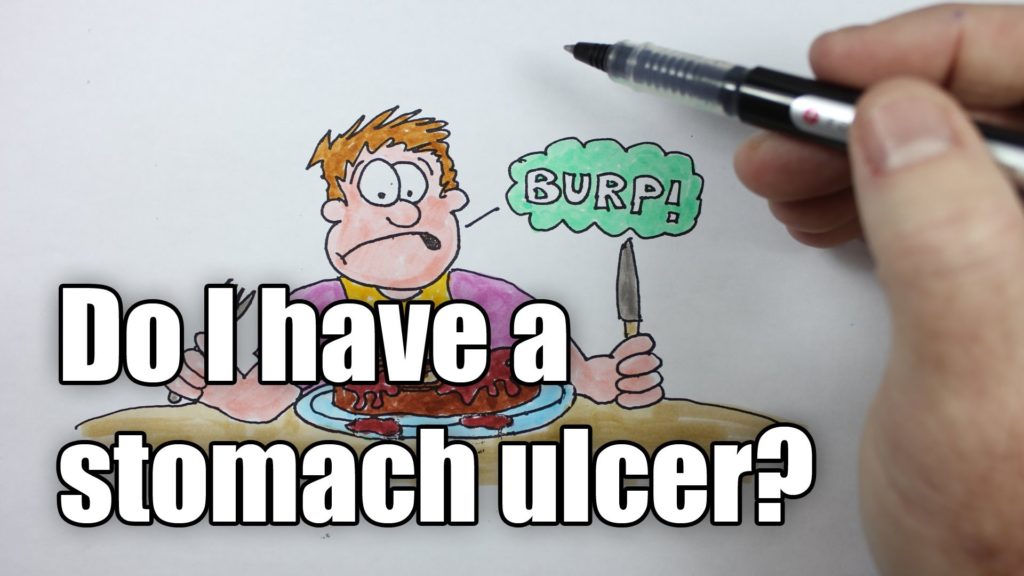
Peptic Ulcer: Acids and antacids in the digestive tract
In the wall of the stomach, glands secrete gastric juices that contribute to digestion are:
- Digestive enzymes, such as pepsin, which fragment proteins into smaller molecules, peptides
- Hydrochloric acid (HCL), which is a strong acid that allows digestive enzymes to be active and destroy most of the microbes (parasites, viruses, bacteria, fungi) that have entered the stomach.
- The content of the stomach is always acidic. Its pH varies from 1.5 to 5, depending on the food ingested and also according to the individuals.
Other glands secrete mucus to protect the internal walls of the stomach
This mucus prevents digestive enzymes and hydrochloric acid from destroying the wall of the stomach by forming a protective film. The wall of the small intestine is also covered with a layer of mucus, which protects it from the acidity of the chyme, the name given to the “alimentary porridge,” which comes from the stomach.
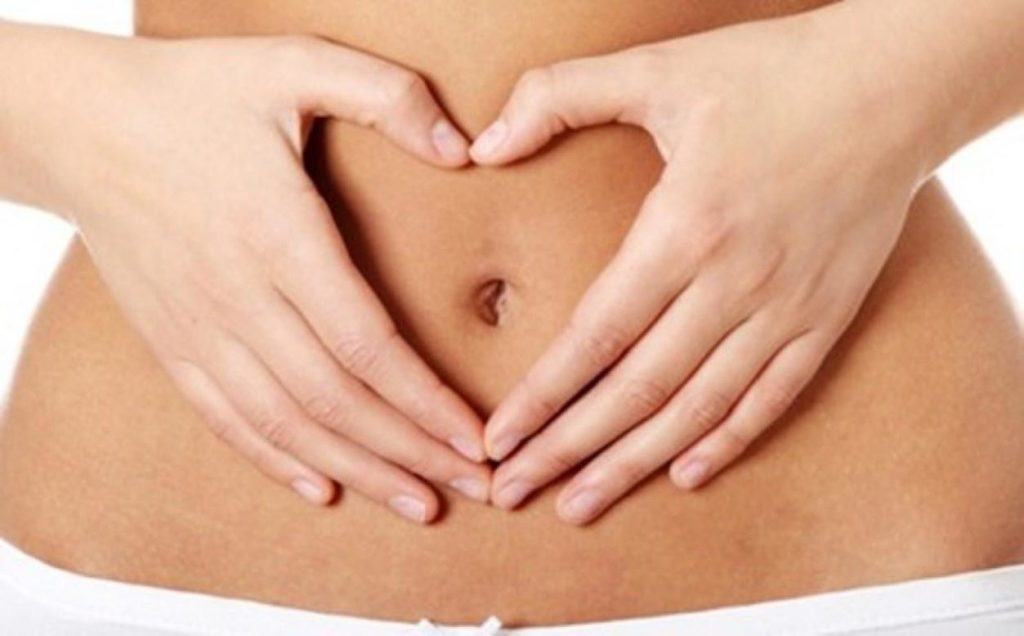
Peptic Ulcer: Evolution
Usually, an ulcer appears gradually in a few weeks. It can also manifest quickly, after a few days of taking nonsteroidal anti-inflammatory drugs, such as, but this situation is not very frequent. The rate of spontaneous healing could be close to 40% (over one month), particularly if the ulcer caused by NSAIDs and ceased to take. The spontaneous final healing, without relapse, is, however, rare. Smokers are more likely to relapse than non-smokers. If the ulcer is not treated or the cause is not stopped, there is a strong possibility that the ulcers reappear within one year. But even with proper treatment, there is recurrence in 20-30% of cases.
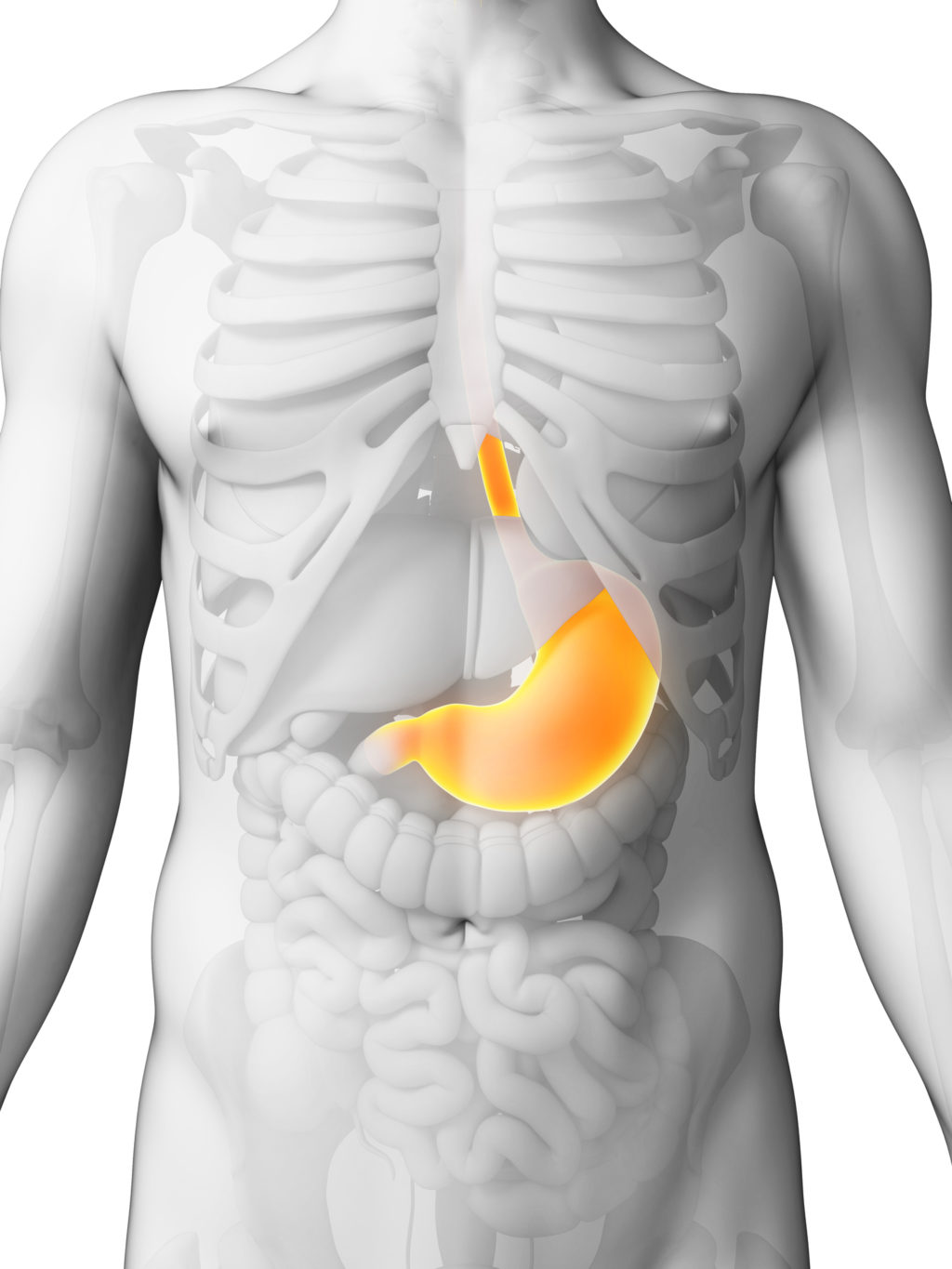
Peptic Ulcer: Complications
Complications are relatively rare. The ulcer can cause hemorrhage: the blood then flows inside the digestive tract. The hemorrhage is sometimes massive, with vomiting of red blood or akin to coffee beans, of blood in the stool that’s red or black. The bleeding may also be low-noise and relatively slow. It’s noticed that the stool becomes black. In fact, under the influence of the digestive juices, the blood turns black. Bleeding can cause anemia over time, if not detected—the first symptom of the ulcer, hemorrhage, with no previous pain, especially in older subjects. A doctor consulted promptly.
Another complication, much less frequent than hemorrhage, is the complete perforation of the wall of the digestive tract. This situation causes violent abdominal pain, which rapidly worsens in peritonitis. This is a medical and surgical emergency.
Peptic Ulcer: People at Risk
- Women aged 55 and over are likely to have stomach ulcers.
- Men aged 40 years and older are more prone to duodenal ulcers.
- Some people may have a hereditary predisposition to peptic ulcers.
Peptic Ulcer: Risk factors
Some factors may aggravate or delay the healing of ulcers by making the stomach more acidic:
- Smoking
- Excessive alcohol consumption
- Stress
- Coffee does not seem to be involved, according to a study carried out in Japan.
In some people, the diet may worsen symptoms:
- Drinks: tea, milk, cola-based beverages
- Food: fatty foods, including chocolate and meat concentrates
- Spices: black pepper, mustard seeds, and nutmeg.
- Some drugs such as anti-inflammatories, cortisone, biphosphonates (used for osteoporosis), potassium chloride.

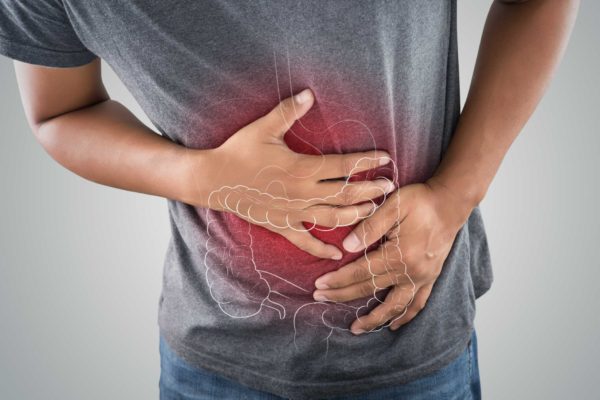
Medical treatments of stomach ulcer and duodenal ulcer
It is necessary to treat vigorously as soon as the diagnosis is made. Usually, the medical treatment of the ulcer does not differ, whether it is gastric or duodenal.
The therapeutic approach aims to:
- Decrease the acidity of the stomach, to relieve pain;
- Treat the infection with Helicobacter pylori, which also help prevent recurrences.
Before treating, the doctor must determine whether it is an ulcer of the stomach or a duodenal ulcer. If the ulcer is in the stomach, a tissue sampling (near the ulcer), performed to rule out the small possibility that it is a cancer of the stomach.
The duodenal ulcer, however, is almost always benign. The examinations consist of a barium meal (barium ingestion, a chalky liquid), followed by an x-ray of the abdomen to visualize the ulcer or gastroscopy. Gastroscopy involves inserting a long flexible tube with a minicamera through the mouth to observe the walls of the stomach and duodenum.
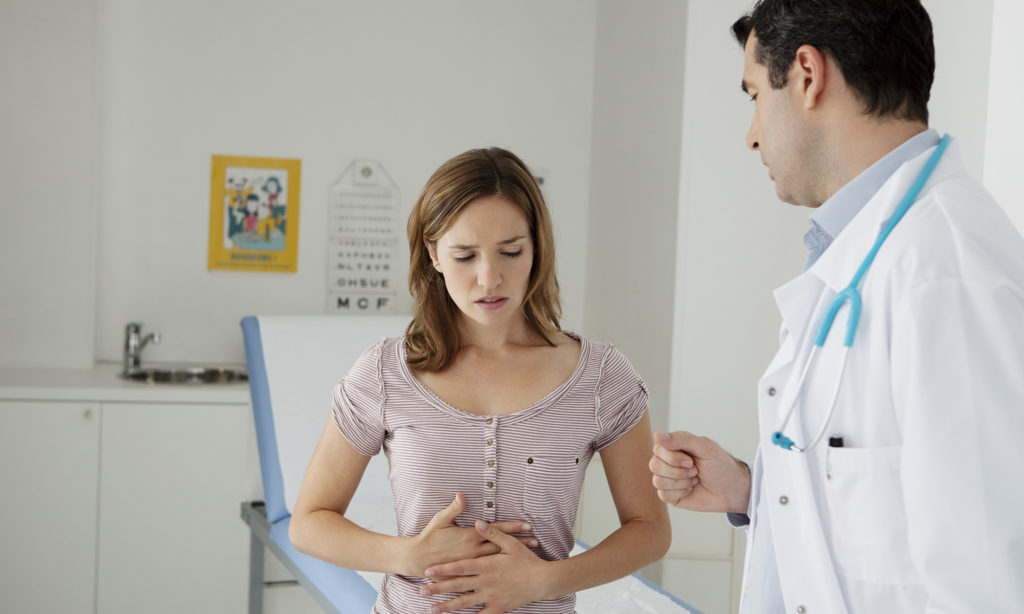
Peptic Ulcer: Medications
The following drugs, often used in combination, lead to the cure of more than 90% of the ulcers in 4 to 8 weeks.
To reduce acidity
Antihistamines H2: These drugs reduce the amount of acid produced by the stomach. This protects the affected part to give it time to heal. The term H2 refers to histamine receptors. The drug binds to histamine receptors to prevent their activation. Cimetidine (Tagamet®), famotidine (Pepcid®), nizatidine (Axid®) and ranitidine (Zantac®) belong to this class of drugs purchased over the counter in a pharmacy.
Inhibitors of proton pump: These drugs (omeprazole (Losec®), lansoprazole (Prevacid®), pantoprazole (Pantoloc®), rabeprazole (Pariet®) and esomeprazole (Nexium®) reduce stomach acid even more effectively They act by inactivating the “pumps” that produce hydrochloric acid, and they also inhibit the multiplication of H. pylori bacteria.
Antacids: Antacids (Maalox®, Mylanta®, Gaviscon®, etc.) do not reduce acid secretion but neutralize acid in the stomach, which relieves pain. They take longer to act than H2 blockers and proton pump inhibitors.
To treat the infection
Blood tests, stool or breath tests, and sometimes a biopsy of the stomach wall done during gastroscopy will allow the doctor to know whether there is an infection with the H. pylori bacteria.
Antibiotics
If the ulcer caused by H. pylori infection, the doctor usually prescribes 2 antibiotics for a period of 7 to 14 days. The most widely used antibiotics are amoxicillin (Amoxil®), clarithromycin (Biaxin®) and metronidazole (Flagyl®). The two antibiotics often combined with another anti-acid medication (see above) or even with bismuth (Pepto-Bismol®), which can also help fight the infection.
This treatment can eradicate the bacteria and cure the ulcer in about 80% of the cases. If the symptoms return, a second treatment is usually recommended. Unfortunately, even when the peptic ulcer is well healed, it can reappear a few months later (this is the case approximately 1 in 5). It’s important to take the entire antibiotic medication as prescribed, even if the symptoms are no longer present.
In the case of ulcers caused by anti-inflammatories, the doctor will most likely recommend discontinuing nonsteroidal anti-inflammatory drugs (NSAIDs). This is usually enough to remove the ulcer, but an antihistamine H2 or a proton pump inhibitor will usually be prescribed for a few weeks. Other drugs, less harmful to the stomach, are used to replace NSAIDs.
Life habits
In addition to taking medications, it is also very important to alter certain lifestyle habits, such as, smoking and drinking, which damage the lining of the digestive tract. There is usually no special diet to follow, except for avoiding foods that seem to cause irritation. Medical treatment of the ulcer may require a particular diet prescribed by the physician, advocating, excluding, or limiting certain foods.
Surgery
Only in a case of drug treatment failure or complications, such as complete perforation of the digestive wall by an ulcer or gastrointestinal obstruction refractory to drugs, or severe hemorrhage that does not respond to treatment.


Followed
- At the end of treatment, the ulcer can be healed by endoscopy (direct visualization of the digestive tract by means of a fiberscope).
- Maintenance treatment of 4 to 6 months is prescribed to prevent the development of a new ulcer.
